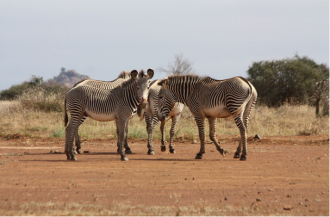Media release
From:
Biology: Most male mammals are not larger than females *IMAGES & VIDEOS*
Males are not larger than females in most mammal species, contrary to common belief, suggests a Nature Communications paper. The authors suggest that biases in the scientific literature, which have existed for well over a century, may have led to this misconception.
Physical size differences between male and female individuals of the same species vary in mammals depending on competition for mates and how parents invest in their offspring. For example, relatively larger male lions and baboons engage in physical competition with each other for mates, and relatively larger female rabbits usually have multiple litters each mating season. While previous research has found that males and females of the same size are surprisingly common, the general narrative has been that males are larger than females in most mammals.
Kaia Tombak and colleagues compared male and female body masses of 429 species in the wild. In most cases, they found that males were not larger than females and that in many species, both sexes are the same size. For example, male and female lemurs, golden moles, horses, zebra and tenrecs are usually similar sizes. However, a smaller proportion of species did show large body size differences between sexes, such as the northern elephant seal (where males are three times larger than females) and the peninsular tube-nosed bat (where females are 1.4 times the size of males). Although the authors did not sample all mammalian species, the trends they identified make sense given prior, overlooked work, they conclude. They suggest that the reason for the 'larger male' narrative may be owing to biases towards research on charismatic and keystone species with larger males and research on male competition for mates, such as in primates and seals. However, species of rodents and bats make up a much larger proportion of mammalian species, which have less frequent body size differences between the sexes (and about half of bats have larger females).
The authors note that their findings may change as more data on mammalian body sizes are gathered in the future and recommend that more research on female biology across species is conducted.
Multimedia



















 International
International



